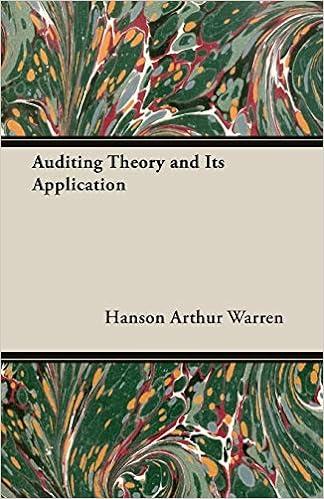Chester has a new design for their product Cozy next round that can reduce their material cost of producing units from $8.14 to $7.32. Chester
Chester has a new design for their product Cozy next round that can reduce their material cost of producing units from $8.14 to $7.32. Chester passes on half of all cost savings by cutting the current price to customers. For simplicity: - Use current labor costs of $4.20 - Assume all period costs as reported on Chester's Income Statement (Annual Rpt Pg 2) will remain the same. Determine how many units (000) of product Cozy would need to be sold next round to break even on the product.
Annual Report
Balance Sheet
DEFINITIONS: Common Size: The common size column simply represents each item as a percentage of total assets for that year. Cash: Your end-of-year cash position. Accounts Receivable: Reflects the lag between delivery and payment of your products. Inventories: The current value of your inventory across all products. A zero indicates your company stocked out. Unmet demand would, of course, fall to your competitors. Plant & Equipment: The current value of your plant. Accum Deprec: The total accumulated depreciation from your plant. Accts Payable: What the company currently owes suppliers for materials and services. Current Debt: The debt the company is obligated to pay during the next year of operations. It includes emergency loans used to keep your company solvent should you run out of cash during the year. Long Term Debt: The company's long term debt is in the form of bonds, and this represents the total value of your bonds. Common Stock: The amount of capital invested by shareholders in the company. Retained Earnings: The profits that the company chose to keep instead of paying to shareholders as dividends.
| ASSETS | 2024 | 2023 | ||
|---|---|---|---|---|
| Common Size | ||||
| Cash | $34,151 | 20.1% | $33,502 | |
| Accounts Receivable | $17,852 | 10.5% | $14,680 | |
| Inventory | $19,220 | 11.3% | $20,509 | |
| Total Current Assets | $71,223 | 41.8% | $68,691 | |
| Plant & Equipment | $159,260 | 93.5% | $124,760 | |
| Accumulated Depreciation | ($60,221) | -35.4% | ($49,604) | |
| Total Fixed Assets | $99,039 | 58.2% | $75,156 | |
| Total assets | $170,263 | 100% | $143,847 | |
| LIABILITIES & OWNERS' EQUITY | ||||
| Accounts Payable | $10,744 | 6.3% | $10,779 | |
| Current Debt | $20,421 | 12% | $32,209 | |
| Long Term Debt | $38,918 | 22.9% | $28,334 | |
| Total Liabilities | $70,083 | 41.2% | $71,322 | |
| Common Stock | $9,674 | 5.7% | $9,790 | |
| Retained Earnings | $90,506 | 53.2% | $62,734 | |
| Total Equity | $100,180 | 58.8% | $72,524 | |
| Total Liab. & O. Equity | $170,263 | 100% | $143,847 |
Cash Flow Statement
The Cash Flow Statement examines what happened in the Cash Account during the year. Cash injections appear as positive numbers and cash withdrawals as negative numbers. The Cash Flow Statement is an excellent tool for diagnosing emergency loans. When negative cash flows exceed positives, you are forced to seek emergency funding. For example, if sales are bad and you find yourself carrying an abundance of excess inventory, the report would show the increase in inventory as a huge negative cash flow. Too much unexpected inventory could outstrip your inflows, exhaust your starting cash and force you to beg for money to keep your company afloat.
Cash Flow Summary Digby
Bar chart with 4 data series.
The chart has 1 X axis displaying categories.
The chart has 1 Y axis displaying values. Range: -40000 to 60000.
Cash Flow Summary DigbyOperationsInvestmentFinanceChg. Cash-40k-20k020k40k60k
End of interactive chart.
| Cash Flows from Operating Activities: | 2024 | 2023 |
|---|---|---|
| Net income (Loss) | $28,518 | $15,986 |
| Depreciation | $10,617 | $8,317 |
| Extraordinary gain/losses/writeoffs | $0 | $0 |
| Accounts Payable | ($35) | $3,180 |
| Inventory | $1,289 | ($14,769) |
| Accounts Receivable | ($3,173) | ($1,763) |
| Net cash from operations | $37,216 | $10,950 |
| Cash Flows from Investing Activities: | ||
| Plant Improvements | ($34,500) | ($30,800) |
| Cash Flows from Financing Activities: | ||
| Dividends paid | $0 | $0 |
| Sales of Common Stock | $0 | $988 |
| Purchase of Common Stock | ($863) | $0 |
| Cash from long term debt | $10,584 | $18,781 |
| Retirement of long term debt | $0 | ($11,300) |
| Change in current debt (net) | ($11,788) | $18,256 |
| Net cash from financing activities | ($2,067) | $26,724 |
| Net change in cash position | $649 | $6,875 |
| Closing cash position | $34,151 | $33,502 |
Step by Step Solution
There are 3 Steps involved in it
Step: 1

See step-by-step solutions with expert insights and AI powered tools for academic success
Step: 2

Step: 3

Ace Your Homework with AI
Get the answers you need in no time with our AI-driven, step-by-step assistance
Get Started


